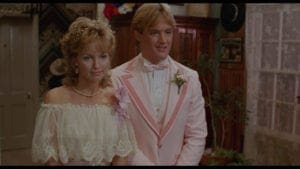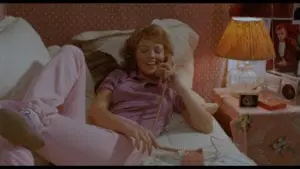Valley Girl
"She's cool. He's hot. She's from the Valley. He's not."
(1983)
starring Deborah Foreman and Nicolas Cage
 PODCAST:
PODCAST:
'80s Movies: A Guide to What's Wrong with Your Parents -
Valley Girl: Totally Rad, but with Grody Perv Stuff
Julie (Deborah Foreman) is a popular teen from L.A.’s San Fernando Valley who meets Randy (Nicolas Cage), a boy from Hollywood High. Their lives couldn’t be more different: they dress different, they speak different, they like different music, and they go to different kinds of hangouts. Julie and Randy don't mind, but her friends do and they're determined to break them up.
Why it’s rad:
Introducing...Nicolas Cage!
This is the '80s-ist movie of the '80s. It identifies the clothes, the music, and the lingo of teens in the early '80s.
So '80s:
More than just a Hollywood vs. The Valley, this highlights the difference between the identity music scene going on at the time.
Deborah was more of a Duran Duran-Rick Springfield type of girl – the mall girl who curls her hair, wears layers of clothes like leg warmers, jangly bracelets, dangly earrings, flouncy mini-skirts.
Tommy demonstrates the look for Val Dudes: jeans and popped Polo collars. He listens to "gutless techno rock."
Randy was a new wave/punk kind of guy – skinny ties, denim, colored and spiky hair. He’s misidentified as a “Hollywood punk,” but anyone living in that era can tell you Randy was NOT listening to punk music (reference SoCal punk acts Black Flag, Circle Jerks, The Descendents). He was definitely listening to “new wave” acts.
The soundtrack is phenomenally '80s, including The Cure's "I'll Melt with You." Also, the boldly homophobic "Johnny, Are You Queer?" by Josie Cotton.
How did "like" become attached to every sentence? Valley Girls. Other Valspeak includes: "bag your face," bitchin', for sure (pronounced "fer sher"), "gag me with a spoon," "grody" (also "grody to the max"), "I'm sure" "I'm so sure," "totally tubular," etc.
What’s your damage?
Some seriously stalkery behavior is painted as adorable and acceptable in Valley Girl:
-
Randy hides out in A BATHROOM …waiting for the girl he likes TO USE THE BATHROOM…and in the meantime, he PEEPS at couple’s having sex and…PEOPLE USING THE BATHROOM. This is a sex crime.
-
After Julie breaks up with Randy, he shows up everywhere she goes. Now, we know Julie actually still loves Randy so she finds it sweet and persistent. Of course, most people who break up want to stay broken up and would find it unnerving and possibly frightening if their ex followed them while on a date.
-
Skip walks into an empty house, hearing a shower, walks into a bathroom and sees a woman in it and, assumably, opens the door. Next scene: he’s having sex with the woman in the shower. This is the most horrifying scene. Now, of course, the idea was that Skip thought he was going to find mom Beth in the shower, and it seems like it was intended as a setup. But, considering that’s not who he found, I can only imagine Suzi would scream, even if she was into Skip.
Randy is angry at Tommy’s interfering with his talking to Stacy because he was trying to “score.” Ecch.
What’s up in the scene where Fred is CHASING Stacy around the car while Randy and Julie blissfully kiss inside? Stacy is laughing as if she’s flirting with Fred, but then Stacy takes a hard anti-Randy opinion. If a girl is running from a guy, it’s usually because she wants to get away from a guy. Stacy’s behavior acts like she is having fun, but this looks like the type of awkward situation where girls are vastly uncomfortable in an intimate situation with a guy (they’re in the middle of nowhere, she just met him, and she doesn’t want to get raped), and try to lightly get out of it by acting playful but keeping him at bay.
Behind the Scenes
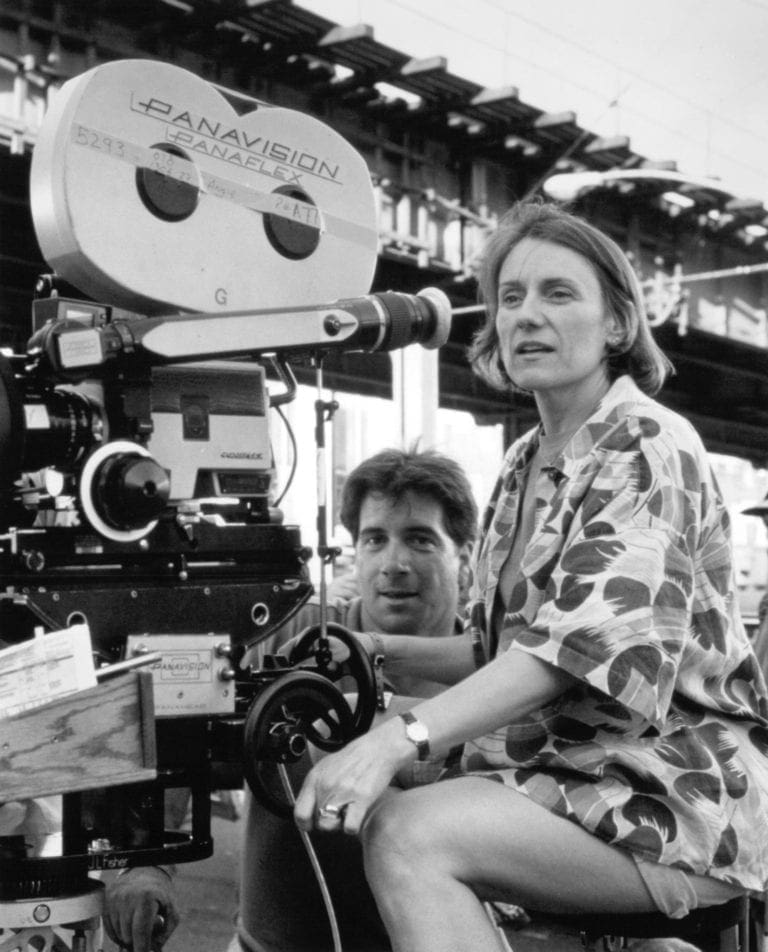
The film starts, in a sense, at Francis Ford Coppola’s American Zoetrope production company, which was created as a sort of incubator for filmmakers Coppola believed in. Martha Coolidge said in an interview with filmmaker Kevin Smith, “I was at Zoetrope because Francis Coppola said, ‘Oh, you’re going to be my woman director. You are going to be THE woman director!’” She worked for three years on pre-production for a rock’n’roll love story that never got made because Zoetrope went bankrupt.
However, that had her visiting music venues for years. “What I didn’t know is that I was prepping Valley Girl. I spent literally three years in clubs, I knew every club, every band, everybody. I prepped for this movie, but I didn’t know it was this movie!” Coolidge said.
Still trying to get the funding her concert movie made, she travels to LA to raise funds where she connects with Peter Bogdanavich. Before the movie gets made, Bogdanavich’s company goes bankrupt.
While at Zoetrope, she became friends with screenwriter Andrew Lane. “Suddenly, Andy Lane takes me to dinner and gives me the script. I’m like, “oh good for you, you got this thing financed, wonderful, I’m so happy for you, that’s really great,” Coolidge said. “He hands it to me and says, ‘It’s called Valley Girl and it’s about girls and that’s why we want you to look at it. We don’t’ really want to direct it because it’s about girls.’ I took it home praying it was decent, and read it, and said, “Wow, I can really make a movie out of this!”
However, when Lane and co-writer Wayne Crawford approached Atlantic Releasing, there was resistance. "They fought Andy and Wayne for two weeks. They wanted someone else. ‘We don’t want her, she’s an artist.’" Coolidge said. "Finally, they were so desperate to not direct this movie, they paid me half their salary. It was $5,000. I knew I’d have to borrow money to get through the year. But, I knew it was worth it. It was worth it.”

THE MONEY
The script by Wayne Crawford and Andrew Lane was written in 10 days.
The budget was $325,000. Coolidge told Kevin Smith at a 2011 screening Q and A, “Our budget was $350,000 and at the last minute they took $25,000 of that away…An enormous number of people were not paid at all. The entire art department – wardrobe, sets, decorations etc. – their entire budget was $3,000, and the studio didn’t even think they needed it at all.”
Holly Hollicker and Elizabeth Daily told KTLA’s Sam Rubin the clothes they wore in the film were not wardrobe, but their own clothes. Coolidge elaborates in another interview, “We had no budget, so everyone brought in their own clothes. We put them in a pile.” She says the production designer/stylist Marya "Delia" Javier "would see who would fit into what and then create color palettes out of them.”
The soundtrack was $150,000, approved after the $325,000 filming budget. Coolidge’s personal lawyer put the deal together to pay all the acts the same amount. She said they came in at the perfect time to make that deal, “pretty quickly music became much more expensive.”
After she had delivered a much better flick than the studio expected, they began a bidding war, coating Valley Girl in a fib — that it did, in fact, cost $4 million to make. “They told them it cost $4 million to make. Paramount was the highest bidder, but ultimately Atlantic figured they’d make more money doing it themselves,” she said.
THE SONG
It’s based on the Moon Unit Zappa song “Valley Girl” written by her father Frank Zappa. However, father Frank was not a fan. The song was made to skewer, not admire, Valley Girls. The Zappas lived in the San Fernando Valley, and he said he thought Valley Girls were “disgusting.” The song was a novelty hit and, to Zappa’s chagrin, helped to spread Valspeak around the United States.
It appears Frank Zappa originally was the one leading the charge to make a film. A Rolling Stone article states that he had “spoken with a number of respected people in the film business about doing a non-exploitive film musical about the lifestyles and mores of teenagers across the ridge from Los Angeles.” Zappa said, “We are working to see how to get the screenplay of the thing organized,” expressing he was against “any Beach Blanket Bingo real fast and cheap teenage piece of shit.”
Whatever happened before the film got to Atlantic Releasing, Zappa ultimately fell out. He then tried to halt the film’s production with an injunction, claiming copyright infringement. He sued for $100,000 in punitive damages.
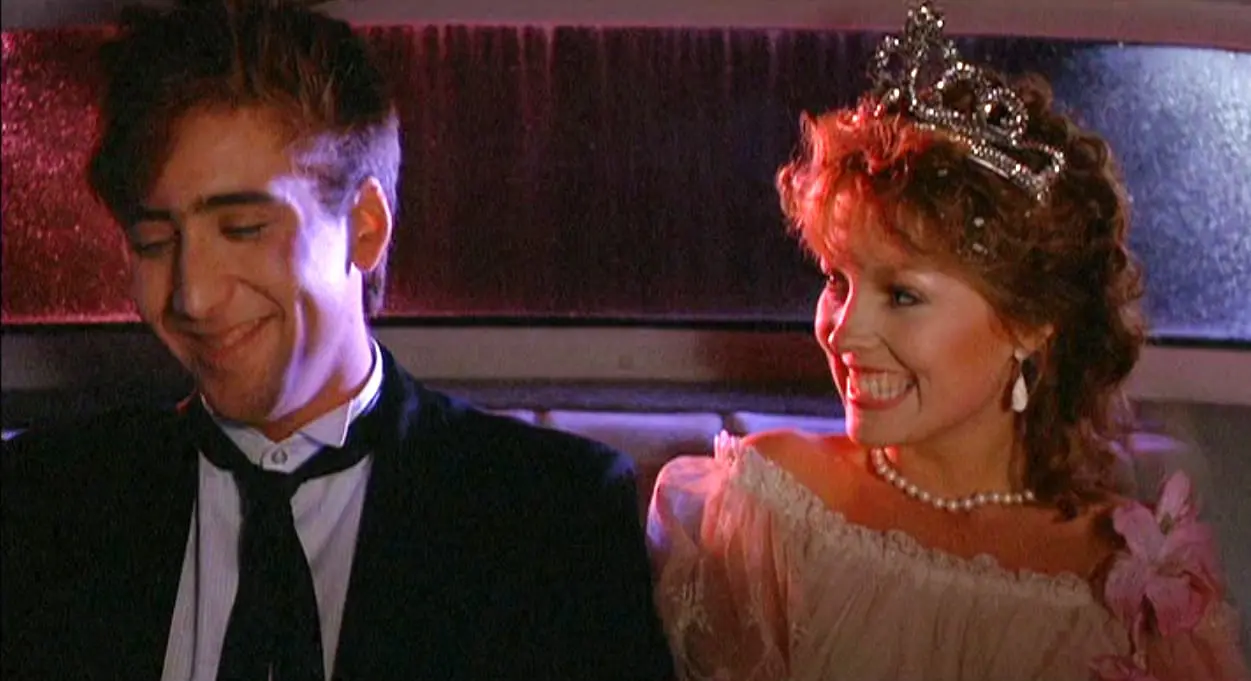
GETTING THE REFERENCES
It’s also a riff on "Romeo and Juliet." So, first the aha moment: Randy and Julie are the modern day names for Romeo and Juliet. Director Martha Coolidge said in an interview that she intentionally used the story of star-crossed lovers as a template for her romance movie. “I worked to bring it even more out front. I created a Valley look and a Hollywood look. This heightened the stakes for Randy and Julie, just as the differences between the families did in Romeo and Juliet. The parallels were always meant to be fun and not super serious but were based on truthful observations about the local conflicts and real teen pressures. It’s not about marriage, but about love and growing up and differentiating enough to love.”
It also borrows from The Graduate. The blooming attraction between Suzi's mother and Suzi's crush Skip are very Mrs. Robinsonesque, and if you didn't catch that, Beth advises Skip: “I have a tip for you: Plastics."
The final scene is also a nod to The Graduate: it's an exact match to when Benjamin (Dustin Hoffman) shows up and makes a scene at Elaine's wedding and she runs off with him, leaving her fiance at the altar, and they ride off in the "Just Married" limo, contemplating what they've done.
If you live in L.A. now, driving from Hollywood to the Valley doesn’t take any longer than driving anywhere else in L.A. (*sigh*), so the idea that a boy from Hollywood High would be so foreign to Valley girls seems weird. In the past, you’d have to drive over the Hollywood Hills – that’s where Randy, Julie, Stacy and Fred are parked when Fred is chasing Stacy around the car. Thanks to the 101, Highland and Cahuenga. However, Los Angeles entertainment news mainstay Sam Rubin, who grew up here, said that in the ‘80s, “it seemed so far away. You might as well drive to Antarctica.”
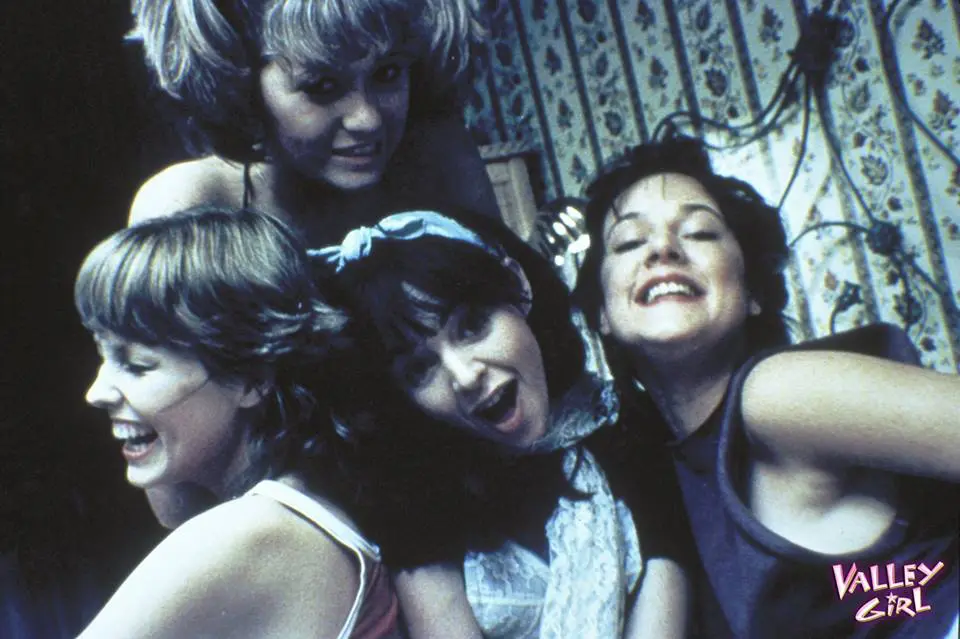
CASTING AND CREWING
Director Martha Coolidge and Cinematographer Fredrick Elmes were friends from NYU film school. Elmes had previously worked in music videos (including The Go-Go’s) and was the cinematographer for David Lynch’s Eraserhead.
Michelle Pfeiffer was originally considered for the part of Julie. Fast Rewind reports that Psycho II actress Julie Carroll was offered the role before Foreman, and that she may be the actress on the movie poster (other theories listed below).
Deborah Foreman was one of the first actors cast. She was already an up and comer and had worked quite a bit in commercials and very small TV roles, although wasn’t yet famous. She had a meeting with a casting director who knew about the Valley Girl project and sent her to see another casting director on the same studio lot. She said she auditioned twice for the role on a Friday and was told she got the job on Monday, but that was her agent forced their hand. “He tells them I have a film that was going to be shot in France and I was going to be starring in it and they really needed to pick someone because I was going to be doing this film: French Women in Love!” Foreman said.
Coolidge said she auditioned all the usual suspects, including all the Brat Packers, but she couldn’t find the right face to play Randy. She did try to cast Judd Nelson, who was still a few years away from breaking with The Breakfast Club. Coolidge said in an interview, “I almost cast Judd Nelson, and he was tied up… which was probably lucky for me. Not that that was a bad choice, by any means.”
She specifically didn’t want a known pretty boy. “I couldn’t find someone with the right sense of both danger and humor, and a kind of charisma that doesn’t just rely on a pretty face. The minute [Nicolas Cage] walked in, I knew he had it.”
She went to the reject pile, found the headshot of an actor named Nicolas Cage and told her casting director, “Bring me people who look like this!” And, he was the last person in. We literally cast everybody else. He came in and he wouldn’t talk to me because I had spent three years at Zoetrope and so had he. Somehow, our paths never crossed. He wouldn’t answer any questions, he thought I knew who he was. This was the first audition he went on using the name Cage.”
When she asked him to return for a callback, he said the schedule conflicted with a small part he’d accepted on Francis Ford Coppola’s Rumblefish. Coolidge told Kevin Smith at a Valley Girl Q and A: “He came up to the office and I put my arm around him and said, ‘Nic, I want you in my movie.’ He looked down and said, ‘I can’t do it.’ I said, “I’m going to make you a star. Look, Francis is like family to me…'” Coolidge assures Cage she will work out the scheduling issue. She calls Coppola’s production manager. “He spends 45 minutes jumping through hoops, looking through papers, and keeps saying, ‘I don’t have a Nic Cage!’ Finally, he says, ‘I have a Nic. Nic Copolla.” And, I just died.”
Nic’s given surname is Coppola. He is Francis’ nephew.
Cage’s callback audition was the break up scene. “They were brilliant. They were so incredible together,” said Coolidge. “It was obvious from the minute he walked in the door, he was the guy. The producer asked, ‘Is he handsome enough?’ And the casting director and I said, ‘We think so, yes!”
Yep, all the Valley Girls are white. That wasn’t Coolidge’s choice. She said the studio refused to let her cast a black actress as one of Deborah’s friends.
Heidi Hollicker, who plays Stacey, was the only one of Deborah’s Valley friends who was actually from the Valley.
Elizabeth “E.G.” Dailey has said that at the time, she was a rocker whose day to day was the Sunset Strip (where Randy hangs). She didn’t know ValSpeak, so in her head, she decided her character was from Malibu and played it that way.
Julie’s mom is played by Colleen Camp, who was only nine years older than Deborah Foreman.
Camp and Fredric Forrest, who played Julie’s dad, had previously worked together in Apocalypse Now (1979)(another Coppola connection!)
Richard Sanders has a small role as the Drivers’ Ed instructor. However, he was pretty famous at the time: he was Les Nessman, the mild newsman on the hit sitcom “WKRP in Cincinnati.”
In another cameo, the film’s writer Wayne Crawford is Lyle, Beth’s husband/Suzi’s dad.
Joyce Hyser appears at the homecoming dance. Two years later, she’d wow audiences as the star of Just One of the Guys.
SCRIPT CHANGES
The scenes of the Randy and Julie falling in love at the club and the scene of their break up were added in later.
“Those guys gave me a script and I knew what I could do with it. But, it had no falling in love scene and no break-up scene," said Coolidge. “We sat down and worked on the rewrites together. I had the emotional impulse to push them farther than they had taken it. They wrote the script and we had very little ego about it. The "fuck you, totally, for sure," [in the break-up scene] was just Nic improving. In rehearsals, the actors made stuff up and we put it in the script. Everybody put something in there.”
To balance the “chick flick” vibe and to check their concerns that Martha Coolidge was too much of “an artist” to direct a commercial film, the studio heads (both dudes) required Martha Coolidge to put in four scenes featuring female nudity, the idea was to get boys to the theater. (Oh, the ‘80s.) (These are the same guys who made the wildly popular but wildly inappropriate Teen Wolf.)
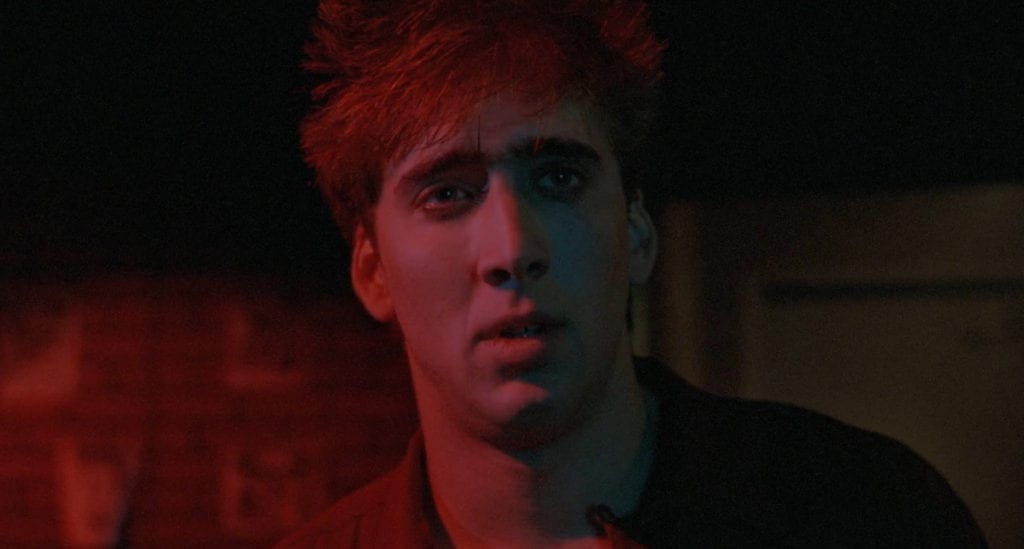
THE MAKING OF
Director Martha Coolidge said after everything was decided, they only had two weeks to prep before shooting. “When you get an opportunity, take it. I clearly saw it was an opportunity to really make a picture I felt I could make better than anyone else.”
Coolidge told Nicolas Cage he had to stop working out because he was too bulked up to play the lean new wave/punk guys filling the Hollywood clubs.
Cage went method. He insisted on sleeping in his car in Hollywood while filming. Coolidge said she kept after him not to do that because it was dangerous and because they had no way to reach him. Cage said he’d use pay phones.
The club used in the film was Club Central also known as The Central. Before that, it was known as Filthy McNasty’s. It is currently The Viper Room, owned by Johnny Depp, and famous for where River Phoenix overdosed.
Originally, the L.A. club band X was set to be the band playing at the club. However, at the last minute, the band panicked that appearing in a movie called Valley Girl would alienate their fans and they backed out. The Plimsouls stepped in, and their single “A Million Miles Away” became a minor hit.
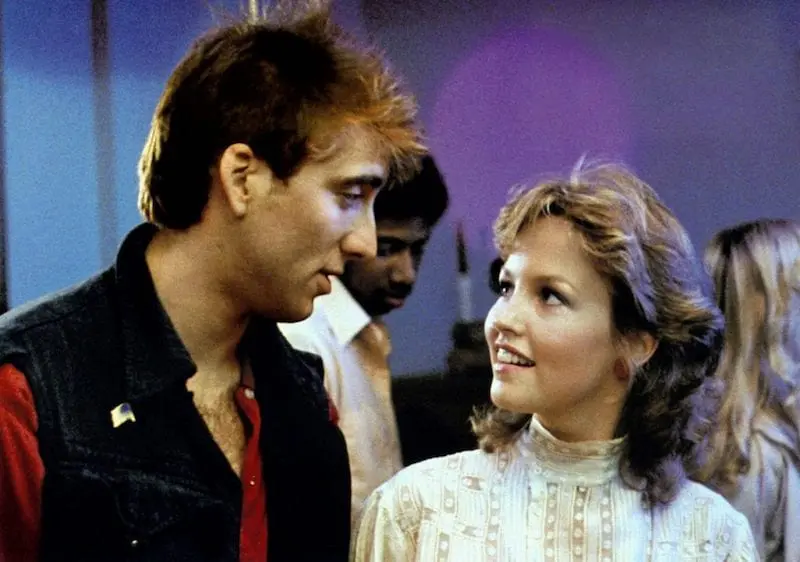
THE CHEMISTRY
Deborah Foreman said she didn’t feel a connection with Nicolas Cage during the audition. Once filming began, though, it kicked in. “It was when we started doing rehearsal, when we started going on and going to the clubs,” she said.
The chemistry between Foreman and Cage is real. Cage said he was crushing on her hard and wrote her poetry (Foreman still has one of the poems, titled “American Dream Girl.”) Cage said, “I just adored Deborah, so there was very little acting on my part.”
Similarly, Foreman said she fell for Cage during filming. She told The Tampa Bay Times, “Emotionally, I was feeling stuff inside. He was triggering stuff in me that I had never experienced in my life. I didn’t even have a boyfriend prior to that movie … I had strong feelings for Nic. When the film ended, we had a conversation. I actually went up to San Francisco with him for a weekend. When we came back, an ultimatum was made—let’s just put it that way. And I decided not to go with the ultimatum, and we were never together after that.”
Moreover, Foreman said they didn’t keep in touch. However, both only have glowing praise for the other. Cage said Foreman’s performance was “sweet and innocent.” Foreman calls Cage’s performance then and now “brilliant.”
Because of the crush Foreman had on Cage, she found the break-up scene hard to muster. “I think deep down, I didn’t want to be breaking up with him! And I didn’t even want to go there, to predestine myself,” she said. “I was really resisting the whole experience. It was uncomfortable beyond means. That was the longest we spent on any scene. It was a struggle. Even when I watch it now, I go, ‘Wow, that's so uncomfortable.’”
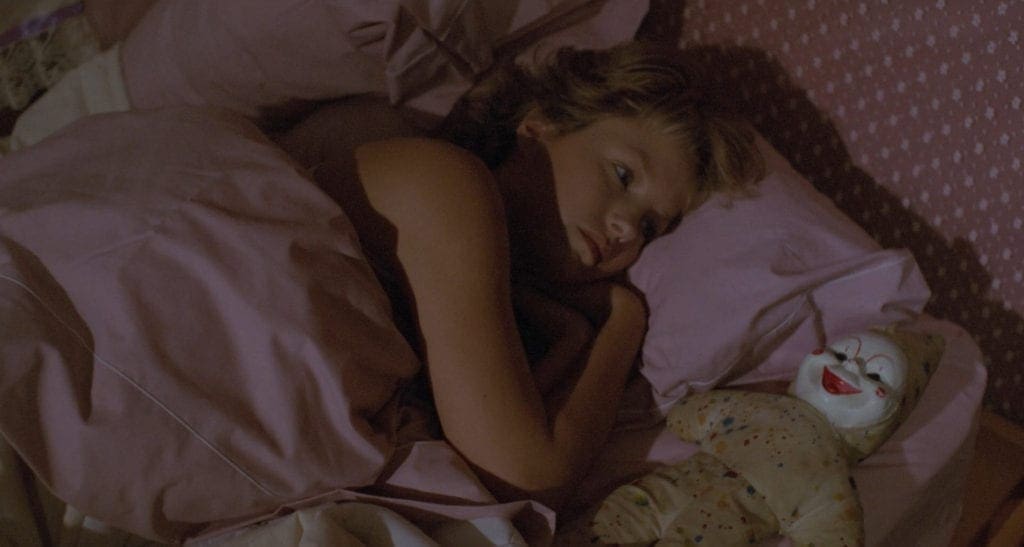
CHARACTER CHOICES
E.G. Daily was more like Randy than Julie. "I was such a rocker from the [Sunset] Strip that I didn’t really know the Valley Girl thing, but I think it was kind of accurate, actually,
she said. "There are people that actually talk like that from the Valley. It’s pretty funny.”
Let’s talk about Cage’s eye-scarring bizarre triangle of chest hair. “Nic was only just 18, but so hairy,” Coolidge says she gave him depilatory to take the hair off. Cage saw his character as being artistic , so, that’s how he shaved it." (it’s been observed the chest hair looks like the Superman logo, a character Cage is so obsessed with that he named his son Kal-El). Notice on the movie poster, you can just see a light bit of chest hair, not the bizarre mass of hair.
Cage did a lot of improvisation to truly create his character. Coolidge told Kevin Smith how Cage was really inventive, “The thing about Nic, in particular, was his quirky sense of humor and his inventiveness. His chef’s hat, 3D glasses, and the little flute he blows – those are all just things he came in with.” Foreman added, “When he spit the gum out, and we’re just cracking up, that was him, it was not an accident, he planned it.”
“He was a very method guy," said cinematographer Frederick Elmes to Kevin Smith. "He lived in his car, you had to call him by his character’s name on the set.”
Foreman had her own unique additions to Julie. For instance, the creepy clown doll was her choice.

FUN FACTS
Foreman had to cut her hair for the film. Coolidge and the hairdresser decided they wanted Julie’s haircut to be short and “to look French.”
The night they shoot the running around the car scene, they did not have a permit. The crew and actors were using actress Colleen Camp’s brother's house as headquarters in the Hollywood Hills. Cage and Foreman were in makeup in the bathroom. They hear a pounding at the door and it’s the police. The police barge in and storm the place. Coolidge said they were “freaking," thinking, “Holy shit, they’ve sent all these cops to arrest us because we don’t have a permit!” Foreman added only in more recent years did they learn what really happened: “He was a drug dealer and they came to arrest this drug dealer who was living in this house!”
Since the film was shot without a permit, they captured a lot of people without permission. Coolidge and Eames think many people probably watched the film and realized they were in it.
Nope, it’s not just a terrible artist who did the movie poster for Valley Girl. The studio was too cheap to pay Deborah Foreman for her image (she was a successful model with a Maybelline contract, so this would be a sticking point). Who is in the poster has some debate: it’s either Tina Theburg who plays Randy’s ex-girlfriend Samantha dressed as Julie, it’s Julie Carroll -- the actress they originally tried to hire, or it's a random model. Either way, it’s not Deborah Foreman, who said, “If I were a producer, I never would have let that happen.”
Not such a fun fact: Coolidge wanted one of the four Valley girls to be black. The studio said no. She said she was so infuriated by the order, that she cast a black actress as the most significant Valley girl in the film outside of the four friends.
Shot in 20 days with only 60 feet of film and no access to more. As a result, very little landed on the cutting room floor. In fact, Coolidge said as far as she remembers, there was just one specific thing: Colleen Camp's funny reaction shot at the end of the prom scene, which was cut at the request of Atlantic Releasing. Coolidge said, "Colleen did a wink, and that’s what they asked me to cut. And, I’ll NEVER hear the end of it from Colleen!”
The entrance to the club has a flyer promoting the upcoming appearance of The Plimsouls (who are in the movie) alongside another singer: Katy Sagal. Of course, just years later, Sagal would become “Peg Bundy” on the long-running “Married with Children.”
During the prom, the extras included two rival fraternities who got into a fight and drove a truck into the gym. The Assistant Director had to manage the warring fraternities, including keeping the on-loan tuxedos in pristine shape.
The people in the club scenes were authentic. Extras casting director Janet Cunningham rounded up real people who hung around Hollywood Boulevard.
H. Gordon Boos was promoted to second Assistant Director during filming. You can see him as the limo driver in the final scene.
In a 1991 VHS release, the movie was retitled Rebel Dreams.
Deborah Foreman told Fast Rewind that the line Julie says to Stacey as they’re leaving the party with Randy and Fred is, “Randy is skillish, okay?” This is different than what’s written in the closed captioning subtitles.
Suzi’s mom Beth is a tip of the hat to Elaine’s mom (Mrs. Robinson) in The Graduate, the mother who is trying to seduce her daughter's suitor. The actress who plays Beth, Lee Purcell, was actually four months pregnant during filming.
In the shopping montage that kicks off the film, that’s writer Wayne Crawford’s real Mastercard that’s used. [Obviously, identity theft wasn’t the problem then that it was today.]
Deborah Foreman moved to Los Angeles right after graduating from Richardson High School in Richardson, Texas. She had only lived in L.A. for two years when she booked Valley Girl. Her only plan was to model, she originally had no interest in acting. She got her SAG card doing a McDonald’s commercial that ran in England.
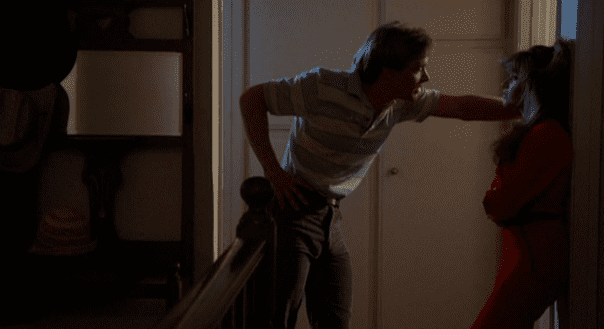
The scene with Tommy (Michael Bowen) tricking Loryn (Elizabeth "E.G." Daily) into fooling around with him was an essential for Director Martha Coolidge. “It was a difficult scene to do. For my leading ladies, Elizabeth was the only one called on to do nudity,” Coolidge said at a Q and A screening. “Tommy’s a really bad guy, and that was very important to me. If you know earlier in my career, I made a movie about my own rape so it was a very, very important scene for me. On the other hand, I’m directing the scene, which made it more difficult, meanwhile, I’m getting notes from the producers saying, “Remember, more tits!”’
Coolidge said the scene isn't a throwaway, and you can see it resonate in Daily's performance. “Elizabeth plays that all the way through, her guilt, her anger at Tommy, you can see it.”
Cinematographer Frederick Elmes said Valley Girl wasn't intended to be as good of a movie as it turned out to be. “Atlantic Releasing and the owners of the company really wanted a movie that was 90 minutes long, some bare breasts and was called "Valley Girl." That’s all they need out of it because they knew they could sell that," said Elmes. "They made the mistake of bringing Martha who was actually going to make them a fine little film with real performances and a story that hung together.”
When Atlantic Releasing realized they had a substantial film on their hands, they initially tried to sell it. "They told the studios the movie cost $4 million and the studios believed them. They had a bidding war around the $4 million figure. Paramount was the highest bidder, they wanted it the most," said Coolidge. "Finally, Atlantic Releasing decided to keep it, they could make more money by holding on to it. And they did. They released it themselves by cycling 400 prints from one side, they had kind of an odd release, but they did it!”
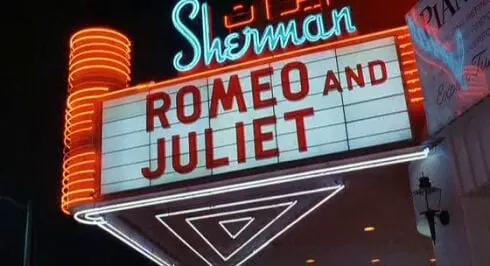
LOCATIONS
Valley Girls were known to hang out at the Sherman Oaks Galleria. It created mall culture and the Galleria's relevance to Los Angeles is depicted in several ‘80s movies. However, because that was the case, the Sherman Oaks Galleria charged a higher fee to film there. So, Coolidge shot the shopping and mall scenes at the Del Amo Mall in Torrance, which is on the complete other side of L.A. than the Valley. (Also, Editor’s note: the Del Amo Mall is now a phenomenal shopping center with upscale retailers (bitchin’!), the Sherman Oaks Galleria became an outdoor mall that is now better known for housing an Arclight Cinemas theater, a 24-Hour Fitness, a Cheesecake Factor and a Paul Mitchell beauty school (bogus!).
The Valley kids hang out at Dupar’s, a legit Valley institution. Additionally, as Julie and Stacy are cruising with Randy and Fred, they pass Casa Vega – a legendary Valley restaurant with celebrity history dating back to the 1950s.
Julie's parents' health food store is currently a Japanese restaurant located at 14543 Ventura Blvd. in Sherman Oaks.
An Officer and a Gentleman (1982) is showing on a theater marquee behind where “Low Rider” is taunting Randy. “Low Rider” is played by Tony Plana, who was also in An Officer and a Gentleman.
Other movies listed on cinema marquees include The Wizard of Oz, The Rocky Horror Picture Show, Please…Mr. Postman, Heidi’s Song, 8 to 4, Tootsie, The Jungle Book, The Empire Strikes Back, and of course, Romeo and Juliet.
The Valley and Hollywood sign montages are an homage to the montage maestro who created the spinning newspaper montages in classic films from the ‘30s and ‘40s. Coolidge studied under him for a summer and he taught her all his methods for making sure the montage has a motivation.
Eames made color palettes for the two different worlds. Hollywood is red and black. The Valley is pastels and turquoise.
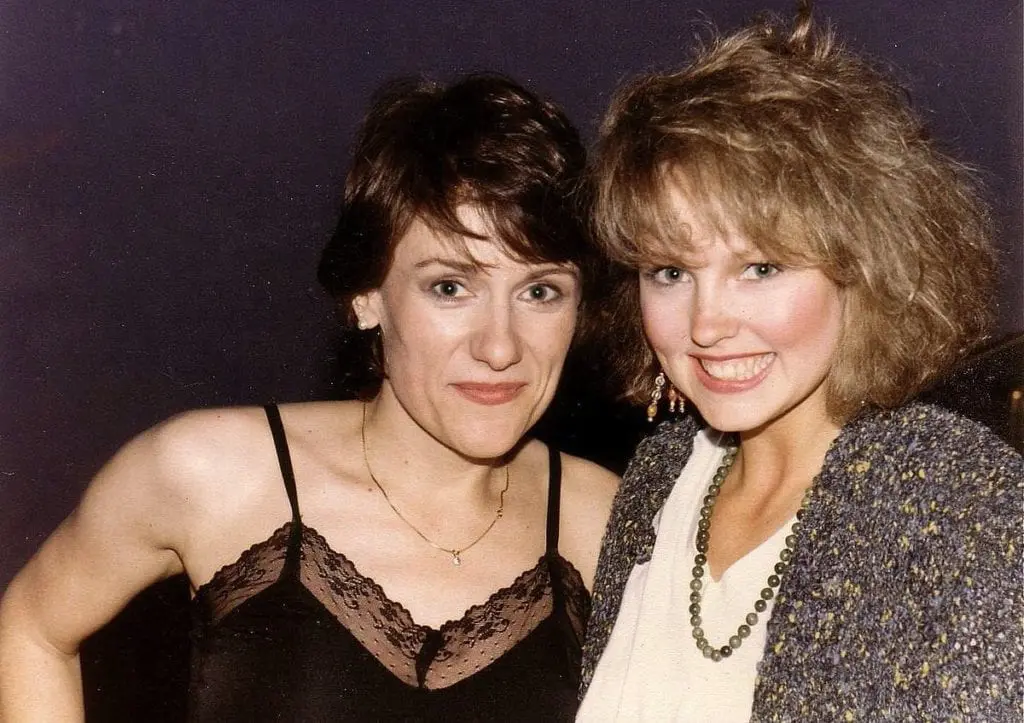
LEGACY
What was once a weird subculture, NBC News and National Geographic noted we all now participate in ValSpeak. As goes SoCal, so goes the world.
Since 2009, there’s been talk about a musical film reboot. In 2016, MGM put it in the works with Rachel Lee Goldenberg directing and starring Jessica Rothe (Happy Death Day) and Josh Whitehouse as Julie and Randy. However, YouTube nightmare Logan Paul was also cast in the film, and because of the controversies surrounding him, MGM pulled the Valley Girl reboot from release. A new release date has not yet been announced.
Director Martha Coolidge said she knew Valley Girl would change her life, and had to live with that belief because she was so broke. “Paramount couldn’t buy the movie, so they bought me. They set me up in this five-office suite that was [Sylvester] Stallone’s office, the desk was up on a platform,” said Coolidge. “They showed me every horrible teen movie they had with people throwing up and girls without any names.”
Coolidge thought her career was set, but it didn’t immediately turn out like she imagined. “I was exclusive to Paramount – mistake. I was on all these teen movies until I was forced to take National Lampoon’s The Joy of Sex. I carried on with Cameron Dye and Michelle [Meyrink]. I discovered a lot of wonderful actors. It’s like, you learn lessons, and that one was invaluable. This one was, I can’t be a hero. It was everything that could go wrong instead of everything that could go right. No money, $20,000 for the music. I should’ve taken my name off but I didn’t.”
Martha Coolidge is good to her actors. She cast them in her future projects.
· Cameron Dye, Heidi Hollicker, Michelle Meyrink, Colleen Camp and Joanne Baron (“prom teacher”) in The Joy of Sex (1984),
· Michelle Meyrink, Deborah Foreman and Joanne Baron in Real Genius (1985).
· Colleen Camp in Three Wishes (1994)
Coolidge hired cinematographer Frederick Elmes as second unit cinematographer on Real Genius.
Atlantic Releasing cast Michael Bowen (“Tommy”) for their follow up teen film, Night of the Comet (1984).
In 1987, Fredric Forrest became a part of Gen X history when he was cast as Captain Richard Jenko in “21 Jump Street” on a new network called Fox.
The two talent who became the most successful following Valley Girl were Nicolas Cage, whose career took off like a rocket, and Elizabeth “E.G.” Daily.
E.G. Daily was also a singer who successfully made relationships in Hollywood. She landed a song “Waiting” on the Breakfast Club soundtrack and two songs ("Mind Over Matter" and "Seduction") on the “Summer School” soundtrack, even getting a music video starring the film’s teen cast. After the ‘80s, she transitioned into becoming one of Hollywood’s most successful voice over artists, best known as voicing Tommy Pickles in "Rugrats." In 2013, she was a contestant on "The Voice."
Ben Stiller is a huge Valley Girl fan.
Coolidge really found she had a voice for teen films. She said, "Teenage youth is such an important time of life. It marks us forever. It brands us with romance, tragedy, heroism and failure.”
Soundtrack
Valley Girl has one of the best compilations of music in a movie, but the soundtrack wasn't widely released until 11 years later. First, let’s note that this was a year before Sixteen Candles, which is notably when John Hughes created an awesome playlist soundtrack. And it was a year before Footloose, when the magical relationship between movies and MTV began. However, this was a few years after Saturday Night Fever, when it became pretty obvious that a great soundtrack could bring in quite a bit of extra money and promotion for a film. However, there were some issues with clearances. For instance, a Clash song plays in an earlier print but it was changed to Men at Work's "Who Can It Be Now?" hit single. Director Coolidge said the studio insisting on leaving the incorrect credit rather than pay the high expense to rerelease the film. “They didn’t care if the credits were correct, they just didn’t want to spend that large amount of money,” she said. “So CBS pulled the soundtrack album at the last minute [Epic Records was the label]. The film was released with the new songs in it and some of the music credits were completely wrong.” Besides the Clash, Bananarama, the Jam, and Culture Club songs are wrongly credited.
But let's get to the real issue: “The guys who owned the company [Atlantic Releasing, so his would be Tom Coleman and Michael Rosenblatt...the same gems of men who insisted on nudity and no black actresses in major roles - Ed.] had insulted the record company and they got mad they wouldn’t redo the credits," said Coolidge. They pulled the whole record that my guy put together.”
Roadshow Records pressed a small run (about 100, according to Heidi Hollicker) of a mini-soundtrack album with six singles. They are a collector’s item worth a mint. Don’t fall for the fake, though, which has the title of the movie misspelled.
A decade later, in 1994, Rhino Records finally released the soundtrack. In 1995, “More Music from the Valley Girl Soundtrack” was also released.
Director: Martha Coolidge
Screenwriter: Andrew Lane, Wayne Crawford
Release Date: April 29, 1983
Rating: R
Opening Weekend Rank: #7. At #1 was Flashdance, #2 was new release Something Wicked This Way Comes.
Opening Weekend Box Office: $1.8 million
Lifetime Gross: $17.3 million
Budget: $ 350,000 $4.5 million
Production Company: Valley 9000 Productions



